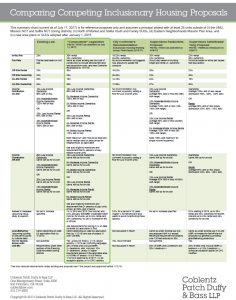The California Court of Appeal for the Sixth Appellate District recently held, in Aptos Council v. County of Santa Cruz, 10 Cal. App. 5th 266 (2017) that environmental review under the California Environmental Quality Act (CEQA) need only analyze environmental impacts of development resulting from a zoning amendment if the development is reasonably foreseeable. This decision provides helpful guidance to municipalities considering zoning and land use plan amendments that permit development at higher densities.
The court also ruled that separate CEQA review of three different ordinances did not violate CEQA’s prohibition against improper “piecemealing” because each ordinance operated independently, could be implemented separately, and served different purposes.
In Aptos, the Court upheld Santa Cruz County’s adoption of three new ordinances that (1) modified height, density, and parking requirements for hotels in commercial districts to allow some hotels to be developed at a higher density and height; (2) extended the applicability and scope of variances that could be administratively approved for minor exceptions to zoning standards; and (3) allowed administrative exceptions to sign regulations.
The appellants challenged the adoption of a negative declaration for the hotel ordinance’s modifications, arguing that an EIR was required to analyze the impacts of potential incremental hotel development. The court rejected this argument, holding that a lead agency’s CEQA analysis need only include “the potential environmental impacts resulting from reasonably foreseeable future development resulting from the ordinance.” Aptos Council, 10 Cal. App. 5th at 273.
The court held that when evaluating the potential environmental impact of a project with growth-inducing effects, the lead agency must evaluate and consider the effects of the “‘most probable development patterns” and that other more speculative impacts need not be analyzed. The court explained that “reasonably foreseeable consequences” of an ordinance must be more than “a hope that hotel developments will occur as a result of the ordinances” and not just an “optimistic gleam in [the County’s] eye.” Id. at 293, 294. In reaching this conclusion, the Court considered evidence that the County had contacted the owners of the two most prominent vacant lots, who confirmed that they had no plans to sell or redevelop their property.
